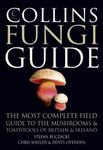![Fungi of the Antarctic Fungi of the Antarctic]()
Click to have a closer look
About this book
Customer reviews
Related titles
About this book
Research of biodiversity in the extreme climate of the Antarctic has recently gained momentum in view of the Search for Life on the planet Mars. Some of the harsh Antarctic deserts are among the Earth's closest analogues of the Martian environment. It is obvious that active life in the form we know at present is impossible under current Martian conditions, because of the very low air pressure and concomitant strong evaporation, combined with the very low water activity of the planet. But there are indications that the Martian climate in the past has been more permissive, and the possibility that life has been preserved in a resting form is not excluded. Eukaryotic spores can be maintained almost eternally in live conditions when dried in vacuo at a low temperature. Several fungi have abilities to survive cold and dryness that match those of extremophilic species of bacteria. The quest for the limits of active fungal life on Earth is therefore a logical and fascinating area of study.
In the eighties of the previous century Imre Friedmann considerably stretched our imagination of the abilities of microbial life forms when he discovered the presence of complete ecosystems inside rocks in the incredibly cold and dry mountains of Victoria Land; these organisms are well-adapted to the Antarctic climate. We now realize that this community has had a large contribution in shaping the impressive rock formations of the McMurdo Dry Valleys and its surrounding mountain-ridges.
But there are more fungi that are endemic to the Antarctic, and they may have unexpected habitats and behaviour. Analyses of fungal biodiversity in microbial mats of a diversity of Antarctic lakes led to the discovery of an adapted group of cup fungi that has originated from species consistently associated with mammal dung. In the absence of large animals in the Antarctic, the fungi have switched to birds. As passage through the warm-blooded animal body is supposed to be a consistent portion of the strategy of these fungi, they must combine thermo- and psychrotolerance in order to complete their cycle. In bird-less parts of the Antarctic, the cold-tolerant part of this strategy seems to have taken over at the moment of loss of animal vectors, and this has resulted in a completely different way of dispersal and an adapted morphology. It seems that changes in ascus structure, that have long been regarded as essential features to delimit whole subclasses of the fungal Kingdom, can be lost within a limited time span when the external conditions favour such fundamental changes.
Research in Antarctic biodiversity thus provides insight into the ability of microorganisms to keep their cellular machinery running under conditions that might be expected to exclude any form of life. The biotechnological potency of these capacities has as yet only partially been explored. The evolution leading to drastic changes under environmental pressure may lead to speciation processes that may be more rapid than those observed in more permissive climates, despite the long generation time in the cold. The geographic isolation of and within Antarctic ecosystems provides a model for allopatric processes of speciation. Despite the absence of fossils we may have indications of the evolutionary time span of such events, since ample information exists on tectonic movements and concomitant cooling of the Antarctic continent.
Customer Reviews






































